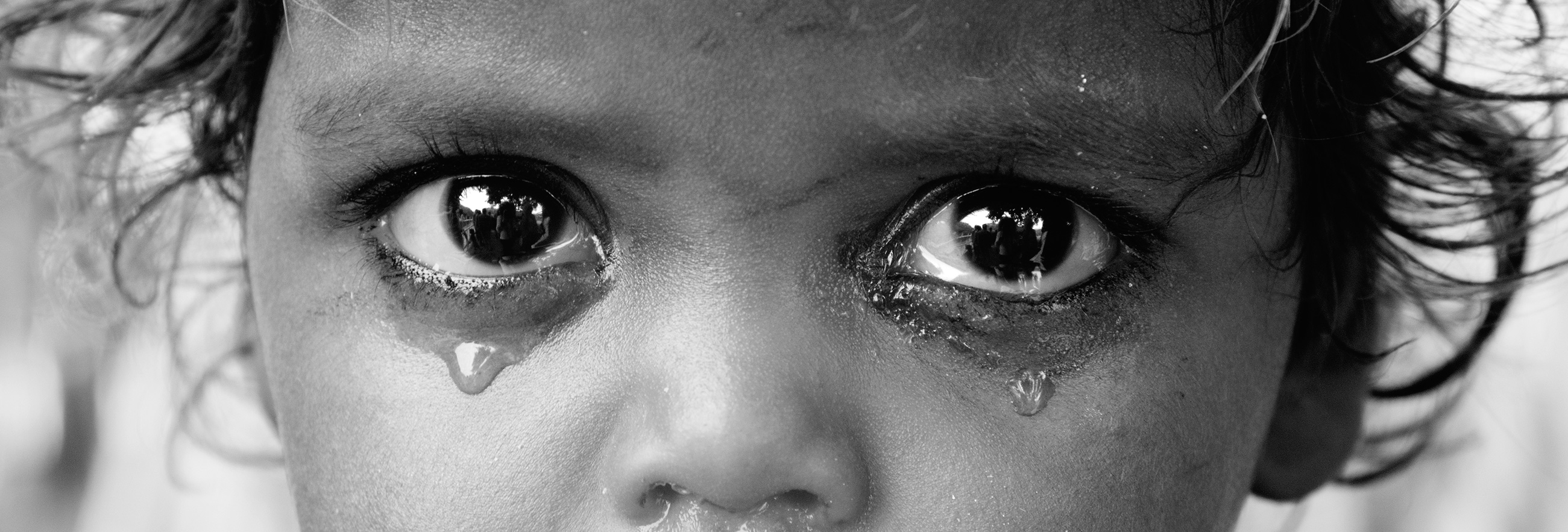
It's a post-Covid world - where are we now? What matters? The things that seemed imperative in early March of 2020 - what were they again?
More and more, it seems like doing what we love is right up there with being with who we love and standing up for what we believe in. If we're lucky enough (or crazy enough) to have chosen a career with massive creative rewards and zero security, we had better focus. What's important? What do you love?
I've always been obsessed with animals. This project is an opportunity to spend more time with them and the people who love them. Along with the work I'm honored to do in India, I will always pursue this project - for me, the simplicity of it is pure joy.
This is really an extension of the Co(r)vid project, expanding beyond genus into fur and scales and four or more legs. Or no legs. I've shot snakes, spiders, scorpions, horses, camels, goats, dogs, elephants, giraffes - I'm aiming at wolves and whales next. I'll be in India in the next two weeks - there's no shortage of macaques in Varanasi, I'll do my best to capture some of their aerial skills.
Meanwhile, we're on the brink of one of the most important elections of our lives and possible involvement in the chaos and tragedy in the Middle East. Hold your loved ones close.
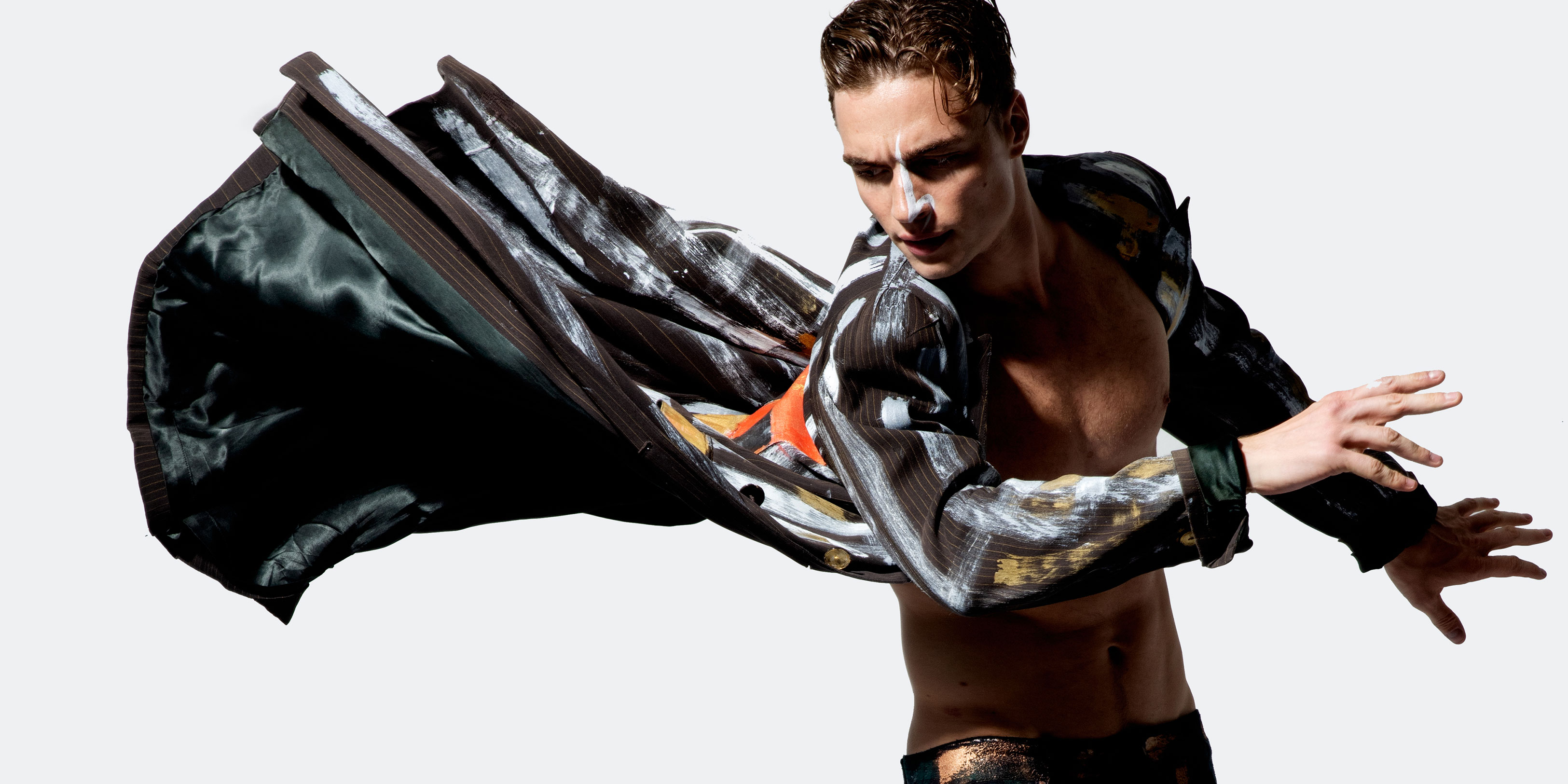
One night in the summer of 2018 I was out late at a club, Black Rabbit Rose in Hollywood, to see our friend Reeve Carney perform - he had a residency there for that whole summer. My friend Phillip Morrison (my creative partner, a truly brilliant stylist) had gone out for the inevitable cigarette. I tracked him down and found him talking with the most striking couple - she had a face like Clara Bow with a perfect smoky eye and Mrs. Lovett twin topknots. He had this mane of white hair and the regal bearing of someone from another century. They were both wearing show stopping outfits - hand painted vintage couture, upcycled by the woman herself - Angela McCluskey.
We begged Angela to let us shoot the clothes - the image with this story is one of the many we shot that day. This shoot led us to an amazing friendship and ultimately the collaboration that we decided to call Threesome. Angela and her incredible husband, the composer Paul Cantelon (her regal white-haired companion that first night) isolated in their perfect bird's nest home in Nichols Canyon throughout lockdown. I continued to visit and we had many a creative session - brainstorming, painting, mission-statement-ing, distilling the concept. In a nutshell, Threesome is a sustainable fashion line that draws from favorite couture collections to create one-of-one pieces of wearable art. We're doing t-shirts as well, so everyone can enjoy. Stay tuned for much more.
Devastating update: On March 9th, 2024, Angela had what's known as a SCAD - a sudden coronary artery dissection. She is gone and the planet has lost this magical being - those who loved her are all heartbroken. There's a movement to create a foundation in her name that would support young artists in disadvantaged neighborhoods around the world. As for Threesome - as an homage to Angela, I will be continuing to create sustainable fashion inspired by her designs, but will not try to imitate what she did. As she wrote herself, "The spark is gone, but the love lives on." And will live on, always. Safe winds, beautiful - I miss you so much.
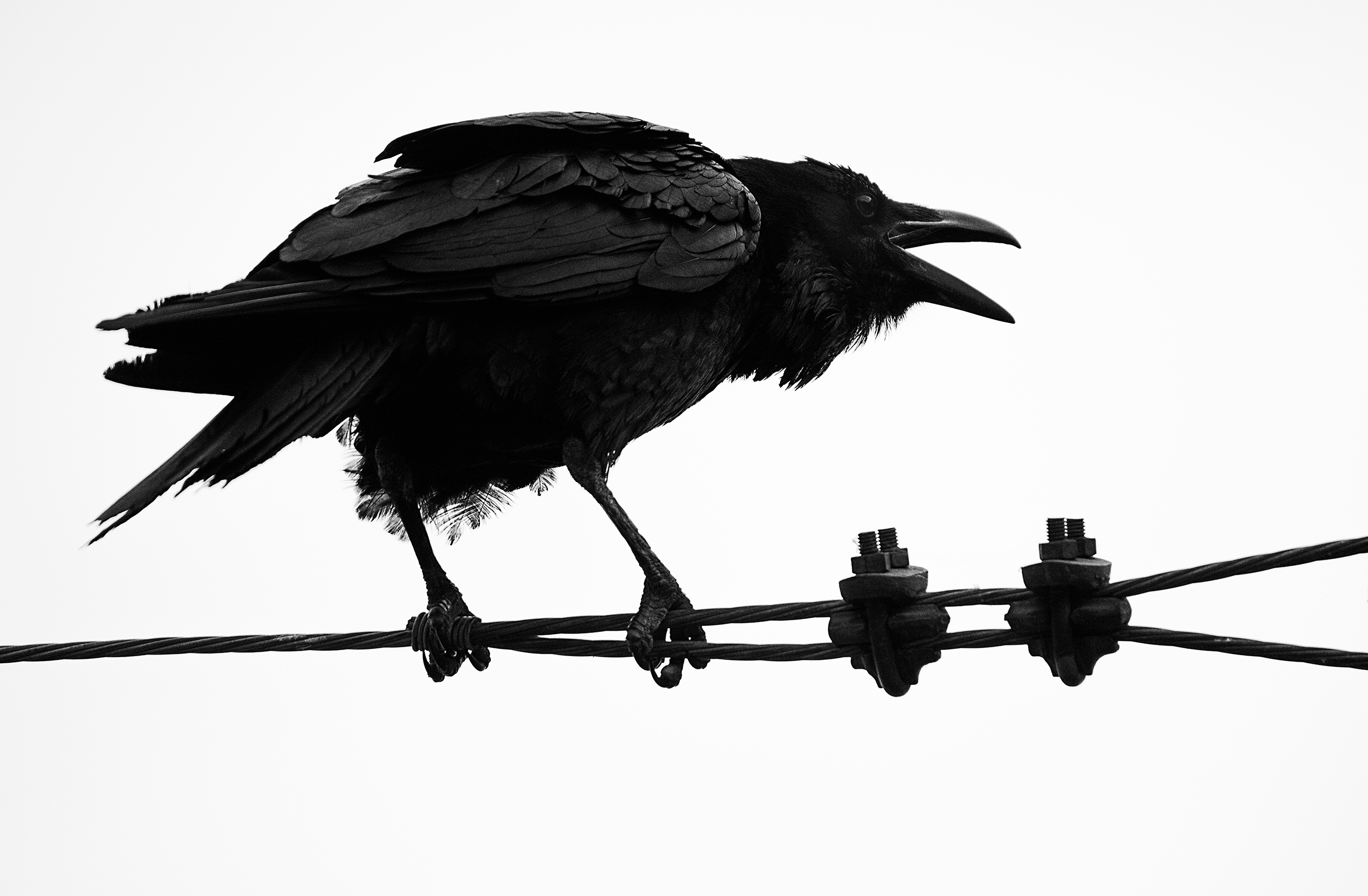
Lockdown.
None of us were prepared for it. This impossible scenario - how could it happen here? I found early on that, deprived of the accustomed creative outlet that is my career, I was going to go certifiably batshit. What could I shoot, just to have my camera in my hands?
Luckily, at the time I lived within a five minute drive of a wildlife sanctuary and had just bought a terrific Sigma 60-600 sport zoom - this was a perfect opportunity to put it through its paces. I spent a few days at the refuge and got lots of egrets, white cranes, great blue herons and cormorants. Fun, but not really eliciting more than a 'heh' as I scrolled through the captures. They were pretty - I loved the sharpness of the lens and its speed - but they weren't hitting home for me emotionally. I needed something with more personality.
Enter the species Corvid - specifically, crows and ravens. These birds have always been a favorite of mine - I love the graphic reflective black, the hundreds of spooky paeans to their grim presence and their ability to set off the motion sensor on our property just to entertain themselves. They're not shy - but they are disdainful of us. This made it initially hard to get them in my lens, which was completely annoying. After a few attempts, I got my system down - like a papparazza, the key rule was to Be Prepared. I learned to distinguish the caw of a crow from the more gutteral, lower pitched cry of a raven. You can't sneak up on them, they're way too smart. Bribes can help, but since their snack of choice is rotting flesh - I'm very determined, but my gag reflex ruled this out. They feel a little Hitchcockian to me - and they remind me of one of my favorite fine artists, Robert Longo. I'm not comparing myself to him, but there's an unintended homage.
I named the series Co(r)vid. It really is a joy to get a decent shot of one of them - I don't think I'll wrap this up anytime soon. It's too much fun.

In the spring of 2015 I was asked to work on a project in Varanasi, India with a group called Voices4Freedom. I was already planning to be in India and the work sounded compelling, so I agreed.
I had no idea what a heartbreaking, uplifting, eye-opening experience it would be.
When Americans think of slavery, a lot of us generally think of the American South, the Civil War and the hundreds of years that our own country lived within that horror. The idea of modern slavery barely crosses our minds - it's archaic, the notion seems impossible. Yet right at this moment nine year olds are being sold. Nine is the magic number - old enough to work but too young to be trouble. Old enough to mold bricks in a brick kiln, weave rugs for the international market, be house slaves. Nine is not too young - they can be even younger.
Every day started with a long ride in a passenger van over rough roads - all the villages we visited were remote; one of the visits required the pass van, then a jeep (over hogsbacks and around herds of water buffalo) then some lean, canoe-like boats to ford a lake, then a half-mile hike across dry farmland, dodging goats and hogs. That village was the most challenging to shoot because the human traffickers were there, mixed in with the villagers, and we had to be very discreet about what we were doing there.
Voices4Freedom creates schools in these remote communities, and along with basic grammar, math and computing skills, teaches the villagers their human rights. A lot of the slavery in India is possible because of the caste system - the lower castes truly believe in their perceived lesser worth, and are easy prey for predatory slavers. It's a familiar story, a bait-and-switch: a family will need a tiny loan, less than $20 American dollars, for medical supplies or housing, and in recompense for the loan, the person or family becomes indebted to the money lender for an indefinite period of time. The family becomes theirs to sell or transport, including the children. Just as transport over the Mexican border by coyotes can lead to enslavement in order to repay an endlessly increasing fee, the lower castes in these situations feel powerless to protest or defend themselves against these opportunists. Children are transported far from their families and forced to work - it's not uncommon for the children to disappear. Slavery is illegal, but the enslaved don't know that. The stories of violence, abuse and murder without repercussion are endless.
Enter Voices4Freedom. Along with the schools, V4F creates cottage industries in these villages, giving the villagers economic freedom. Sometimes it's as simple as providing irrigation, some livestock or seed, and soon the village has its own income stream. The average cost to completely free a village is about $40,000 - such a small number to change so many lives. Each school educates at minimum 40 former slaves - in the last village we visited, a former slave entered an election and was just elected to local office. Another is teaching enslaved people how to free themselves. Here are some of the many people we met in Varanasi.
I now hold a ten year Indian visa - I've been seven times so far and intend to go back every year to continue working with V4F.
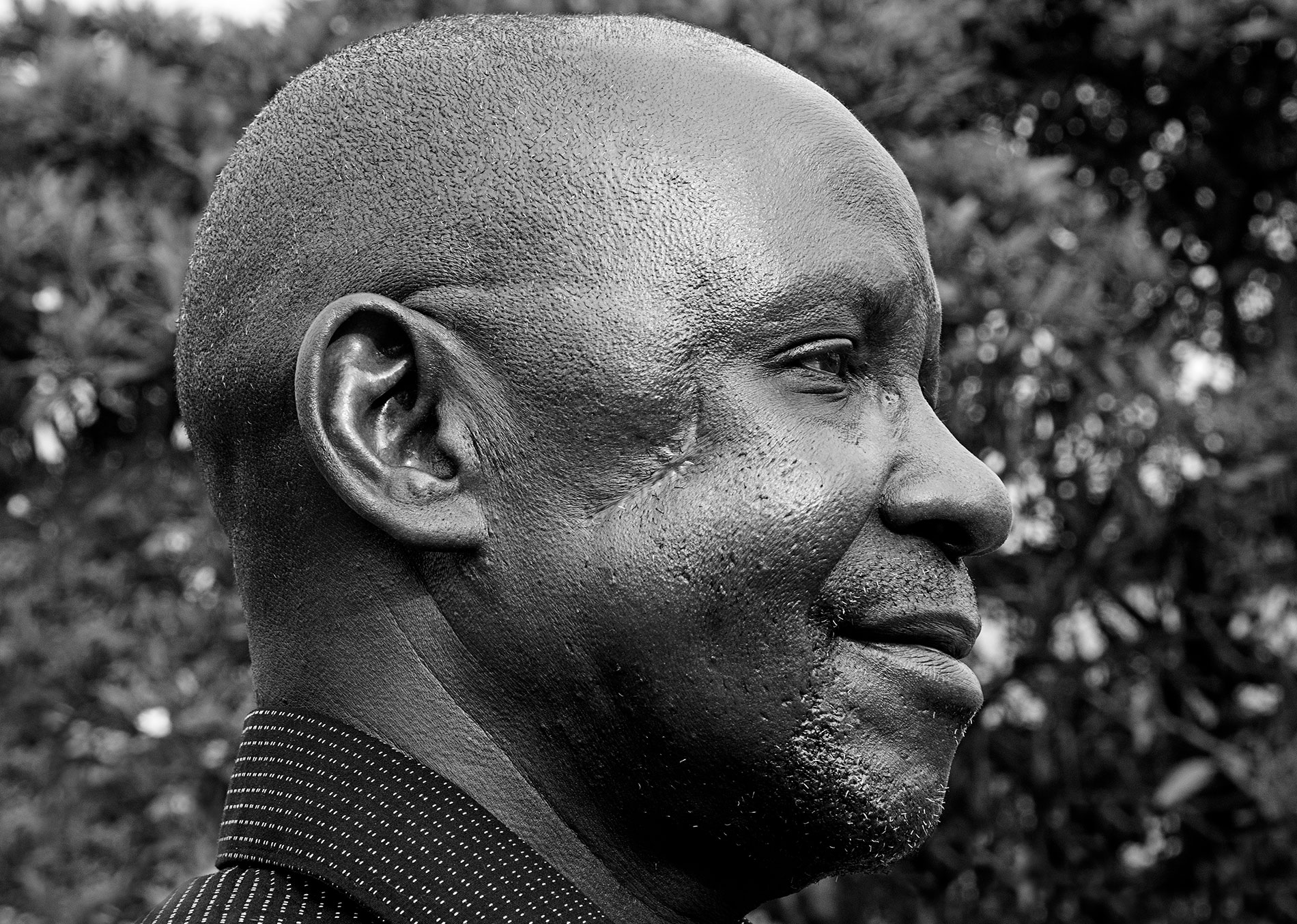
Before I went to Rwanda, I had no idea that I was a Mzungu. Apparently you can get Mzungu t shirts and hats - before I head back to Rwanda, I'll have to get one.
A Mzungu is a white person, and pretty much everywhere we went, we'd hear 'Mzungu!' being shouted by throngs of little kids as we approached. We were in Rwanda to deliver rugged wheelchairs to people who needed equipment that would withstand the rough roads that occasionally crop up outside of the capitol city of Kigali. I was completely unprepared for what we saw there, and I still don't understand.
Somehow, impossibly, the people of Rwanda - both the survivors and the perpetrators of the genocide - live together in peace. The capital city is beautiful, modern and on an economic upswing. I never felt unwelcome - the opposite in fact, and that was everywhere. I went into a local church with the DP on our crew, just the two of us to shoot their children's choir, and we were so embraced by the entire congregation - it was overwhelming.
But. One cannot visit Rwanda without remembering the genocide, and seeing the evidence of it everywhere hiding in plain sight. Hutu and Tutsi stand in line together at the grocery store, people live on the same block as the people that slaughtered their family. Is it possible to forgive that? It is essential to visit the touchstone sites of the genocide if you're visiting for the first time - but those visits didn't answer the question for me, they only underlined it. A vast capacity for forgiveness must live within the bones of these incredible people - even as the bones of their loved ones lie everywhere as evidence.
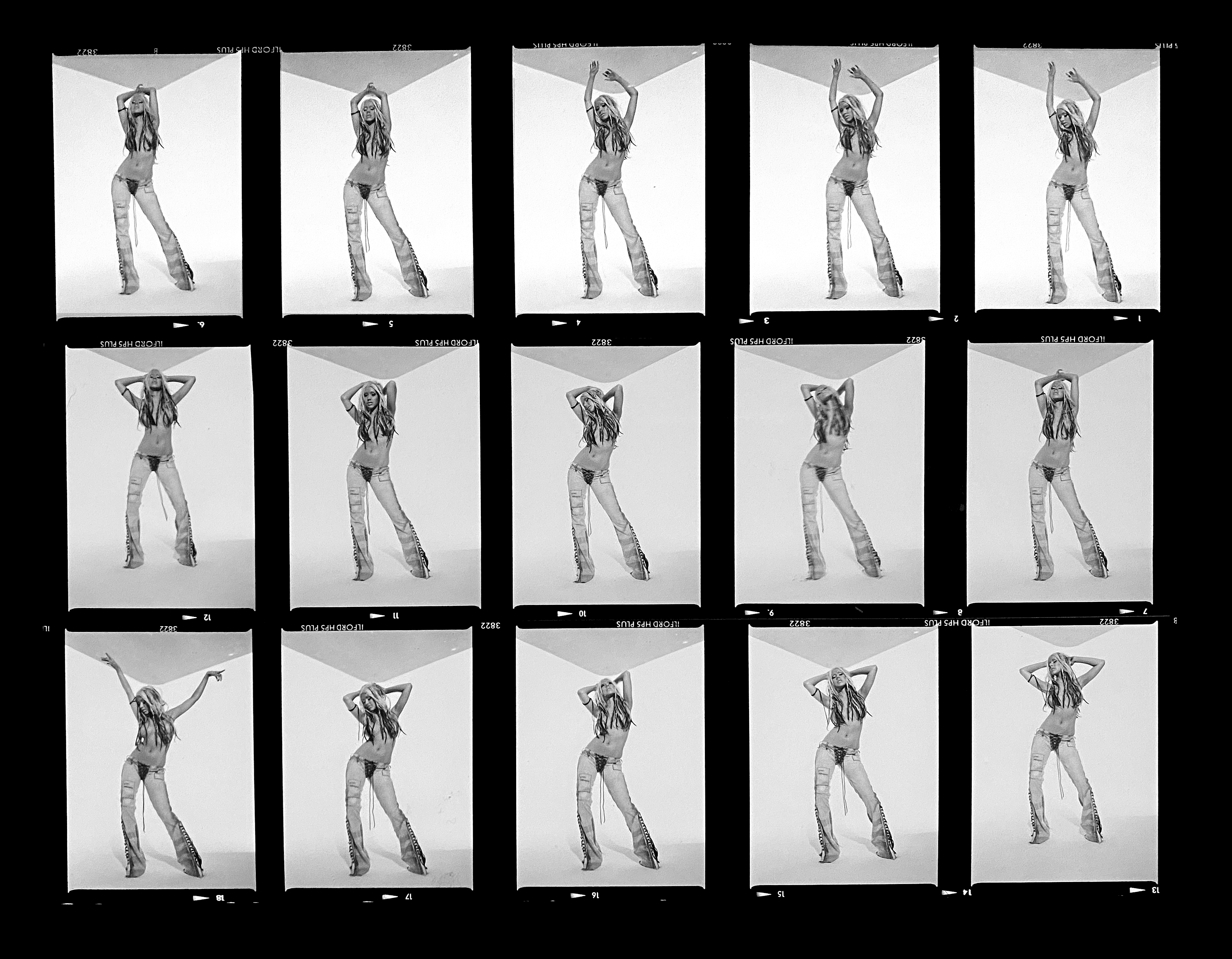
Twenty years ago, we still shot on film. Medium format film cameras were the industry gold standard. Each film stock had its own character - you expressed your vision through the film choices you made before the shoot. My favorite black and white film was and is Ilford HP5 - the grain, the range of greys, the deep blacks - it was the right counterpoint to the raw vulnerability that Christina revealed with the release of Stripped.
Before the album sold millions and won a Grammy, there was huge backlash to Christina's self empowerment. Her Stripped intro was prophetic -
Sorry, I'm not a virgin
Sorry, I'm not a slut
I won't let you break me
Think what you want
- the airwaves resounded with slut shaming. Looking back, it's shocking how trusted news outlets, talk show hosts and DJs lined up to smack down the 21 year old for her fashion choices, her makeup, her dancing. But the negative attention had zero effect on her fan base. Christina's takeover of her career and her image established a self-empowerment blueprint for millions. Her hit Beautiful became an anthem.
Photographing musicians is always my favorite assignment because it's such a collaborative process - we're telling a story together. It was a complete joy working with Christina and her amazing team and remains one of my favorite projects. Here are some outtakes and a few familiar images from the packaging shoot for Stripped.
In April of 2015 I was hired to shoot what would be one of the most exciting assignments of my career - I traveled with a group called The Human Journey to Dharamshala, India to photograph His Holiness the Dalai Lama and the Archbishop Desmond Tutu having a five day conversation about joy.
I had never been to India before - the movies, of course, always show cows wandering everywhere, and yes, they were there, even in Delhi - cows, water buffalo, goats, pigs all sharing the roads with bicyclists and huge painted buses and taxis and cars and people on foot. There's a different philosophy to driving in India - no one ever stops honking, but it's seen as more of a 'pardon me, I'm here' than the American 'get the f-- out of my way' (which I am as guilty of as any American.)
The flight to Dharamshala was fabulous - we got to fly in a prop plane from the 70's, a 46 seater that had little hand-painted red doodads over every window on the outside. It was like a flying bus - it felt like an hour and a half of going down a giant staircase on our butts. Flying towards the Himalayas has it's own special set of air current issues, and they made themselves well known.
Dharamshala is actually the town below the smaller village where the Dalai Lama built his temple - that town is called Macleod Ganj, after the Scot who settled it. It is a cluster of streets and buildings paved with stones and concrete, propped up with bamboo poles, lined with prayer wheels, leaping with monkeys, the narrow streets teeming with vendors selling singing bowls and prayer beads and pashminas and snacks. Monks mingle comfortably with locals - many, many of the residents are Tibetan, so there's a great sense of a Tibetan community there. Here's why:
In Tibet, a traditional Tibetan education is forbidden by the occupying Chinese government. This is a very unique education - not only are students schooled in Tibetan Buddhism, but in calligraphy, dance, musical instruments, debate - it's a very intellectual society, and its traditions have survived for thousands of years. So - many Tibetan parents choose to bring their children to Dharamshala to go to the Tibetan Children's Villages, schools run and funded by the Dalai Lama. These are boarding schools - students arriving there can expect to be fed, housed, clothed, and educated. Getting there is an Olympian feat - since borders can't be crossed without question in a vehicle, parents walk their children across Tibet, over the Himalayas and down into Dharamshala. There they give their children into the school's care - and then many of the parents have to turn around and walk home, needing to return to their land and property. Many of the children are very, very young when they make this journey - it's heartbreaking for everyone, children and parents alike are devastated at having to be separated. Clearly Tibetans value their beliefs and education so highly that the physical risk and the heartbreak are worth the end result - a Tibetan who understands what it means to be Tibetan. Under the current occupation of Tibet, this education wouldn't be possible - it wouldn't be allowed.
In the US I have the best crew on the planet, people who I consider to be family and would trust with anything, any time. None of us could bring crew for this project, so we all pitched in and helped each other, lugging gear and hanging duvetyne. Along with my stills, the conversation was being videotaped and our unparalleled director Peggy Callahan had put together a brilliant team in charge of motion - DP Jason Ezukian, lighting director Zack Savitz and sound guru Juan Cammarano. Zack picked up two grips in Delhi, Sibi Veliath and Satbir Singh - these guys were so amazing, just salt of the earth talented and hard working men. Together we all transformed a monastery dining hall into a studio set, with brilliant, funny, hyper-talented Peggy spearheading the project. You can see images from the project here.
We settled in to our hotel, Zambala House, met the local monkeys and spiders (both big, brown and furry), had dinner at Chonor House (where Richard Gere stays, very humble yet lush with Tibetan antiques and textiles), and prepared ourselves to meet the great men.
My first experience with His Holiness was him reaching out and patting my fro - and that was typical of the whole ten days, both His Holiness and Arch (as Archbishop Desmond Tutu antically prefers to be called) were constantly joking, welcoming, inclusive and kind. His Holiness insisted on having lunch with everyone at least once, so we all dined in his private dining room at some point. He led us in a meditation in his home as well - then Arch performed communion for us all. We levitated back to work.
There's a quote from the Dalai Lama painted in huge letters across one of the buildings at the Tibetan Children's Village: My Religion Is Simple - Kindness Is My Religion. This from a man who had to flee his country under threat of capture, imprisonment and possible disappearance (Gendun Choekyi Nyima, the Panchen Lama, disappeared at five and hasn't been heard from in over 20 years.) And Arch, a man who has seen so many horrors (having lived through apartheid) believes firmly in forgiving one's enemies - not condoning their actions, but forgiving the human. It was an incredible conversation - it still feels surreal. I am incredibly lucky and grateful to have been there.
Update - the book came out to fantastic reviews and spent 37 weeks on the New York Times bestseller list. It has been translated into over twenty languages and sold millions of copies around the world. And now, the footage we shot has become Mission: Joy, a feature film currently showing in festivals worldwide.
RIP Arch - 12/26/21
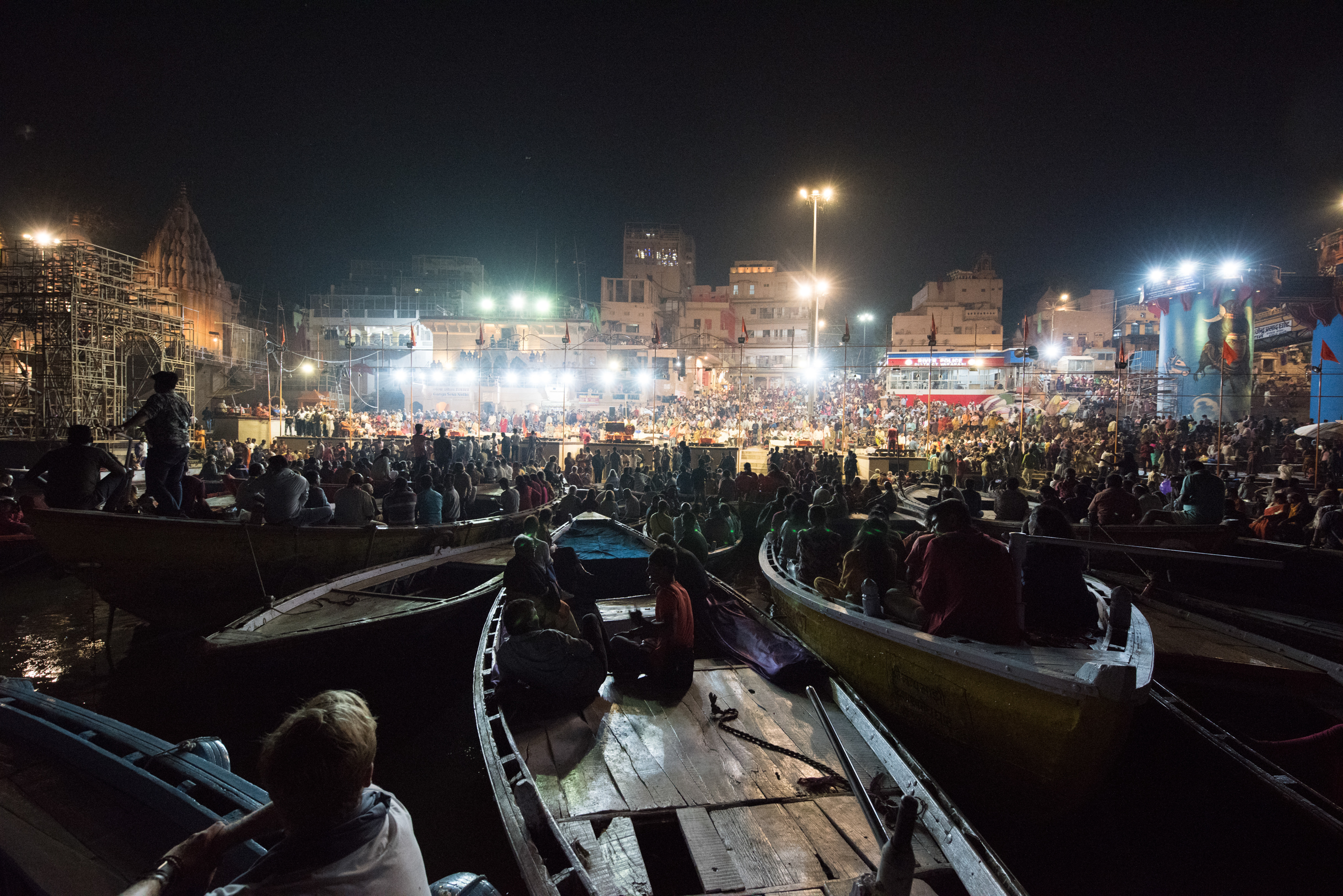
When a movie calls for an insane street scene with Brahma bulls wandering among speeding tuk tuks fighting for space with bicycles bearing five family members at once and people on the sides of the road selling piles of spices and teas and sandalwood beads and tiny brass Ganeshas and carrying their weight in laundry on their heads, and something is on fire - that's Banaras. AKA Kashi, AKA Varanasi.
There's an initial sensory overload - the electric colors, the people in all their varying roles, holy men, veiled women in saris driving motor bikes, boys playing cricket in empty lots, the smell of nag champa and river water. Monkeys leap along the tangled cables and old telephone lines, India's answer to squirrels. Ganga, the mother river that all faithful Hindu people return to in death is a magnificent throughway bearing boats and swimmers and cremated loved ones all in the same city block. The narrow alleys in the old city are enclosed by the walls of palaces and shops and temples, hidden passages four feet wide opening out into courtyards with shrines to Kali in their centers, guarded by bored cows.
Then - the noise. In India, one uses one's horn to politely warn all the other drivers on the road that you're there. This results in an endless orchestra of horns - endless. That 'something on fire' smell - it's always there, even in your hotel room. India is a full immersion trip, whatever class you're flying - if you're not interested in a complete cultural dunking, India isn't the country for you. If you are - it is beyond glorious.
Indians agree that Varanasi is the holiest city in India - there are roughly 2000 temples within the city limits, some huge and grand, some tiny and humble. Buddha delivered his first sermon there at Sarnath.
After seven years, seven visits, Varanasi has grown on me. Every year, I cannot wait to return.
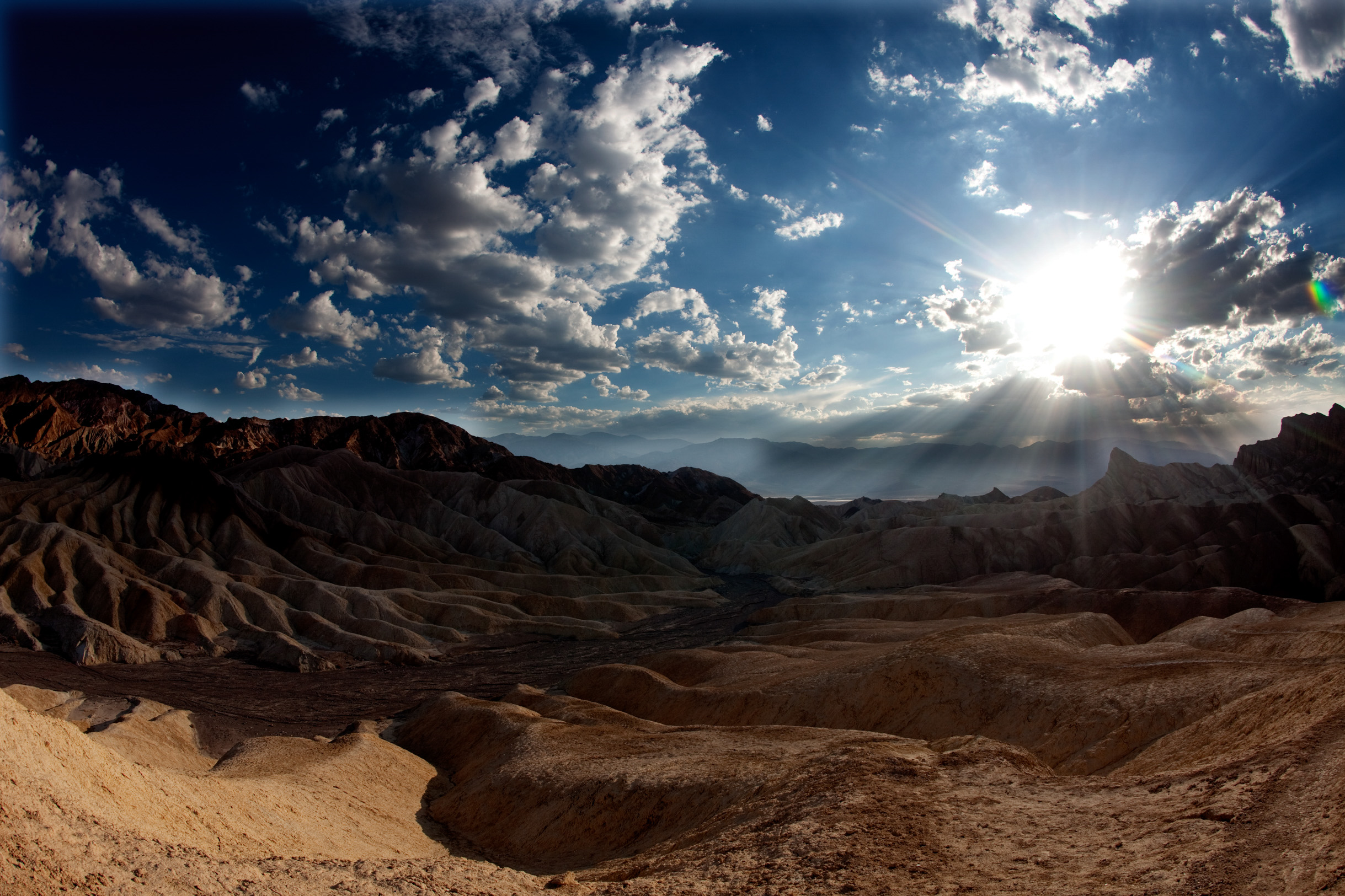
I'm obsessed with Death Valley. I can't go often enough. I've been so many times at this point that I could happily lead a tour. That whole swath of the 395 from Mono Lake down to Red Rock is a visual feast, but Death Valley is the main dish. Lots of people flock to Joshua Tree - it's nice and super accessible, you can pretty much drive the whole park. But it doesn't have the wildness, the palpable sense of time and even danger that the extremes in the Valley create. Other than Badwater (which you can drive right up to) all the best views in the Valley require an effort - I think that adds to the reward.
Years ago I assigned myself a photo endurance day, starting at dawn at Mono Lake - a brisk 50 degrees on the 10th of July - and made my way down through all the Death Valley views, from Mosaic Canyon to Zabriskie Point and everything I could find in between. The park was 122 degrees in mid afternoon and the only other people there were a scattering of European tourists, French and German. It was the hottest at Badwater - 122 degrees - and the walk out onto the salt was dizzying, the few people out there pouring water over their heads. You can taste the salt on your skin - sweat evaporates immediately.
I made it to Zabriskie Point in time for sunset - that's the cover shot - and miraculously I was alone at this usually mobbed tourist attraction. Just me and the wind. As I pulled away, a busload of tourists pulled in. Perfect timing - I headed home.

Of all the places I've visited, the first I'd want to return to is Iceland. It's understandable that the country inspired Tolkien to write his trilogy - it's packed with magic. Epic impossible waterfalls, moss a foot thick that rambles for miles over volcanic rock, geothermal steam billowing out of the ground, sheep the size of Mini Coopers and the bluest skies I've ever seen. And the northern lights. We managed to cover a lot of ground despite being mid-shoot on a campaign, but there are still things I didn't get to do and that must be remedied. Among them -
Ride an Icelandic horse. (Don't call them ponies, it pisses off the Icelanders.)
Drive the ring road.
Swim in the Blue Lagoon (even though one of our local producers had never done it because he didn't want to 'bathe in the ass juice of 30,000 tourists'.)
Boat on Jökulsárlón, the glacial lagoon.
Spend more time in Reykjavik.
Visit the northwest, which is supposed to be the wildest and most beautiful.
There's also this - the water is the purest on the planet. This affects the flavor of everything. Coffee, beer, bread, cheese, chocolate, eggs, any meat - it's all dazzling because the water is so pure. Of course, during 2020 and all that came with it I was dreaming of this perfect pure country - that by the way sent all its miscreant bankers to jail in 2008 instead of bailing them out. There was not a scrap of discarded trash or graffiti that I saw, the Icelanders all speak at least three languages - yes, it is everything everyone says it is. Go, absolutely, at least once in your life.
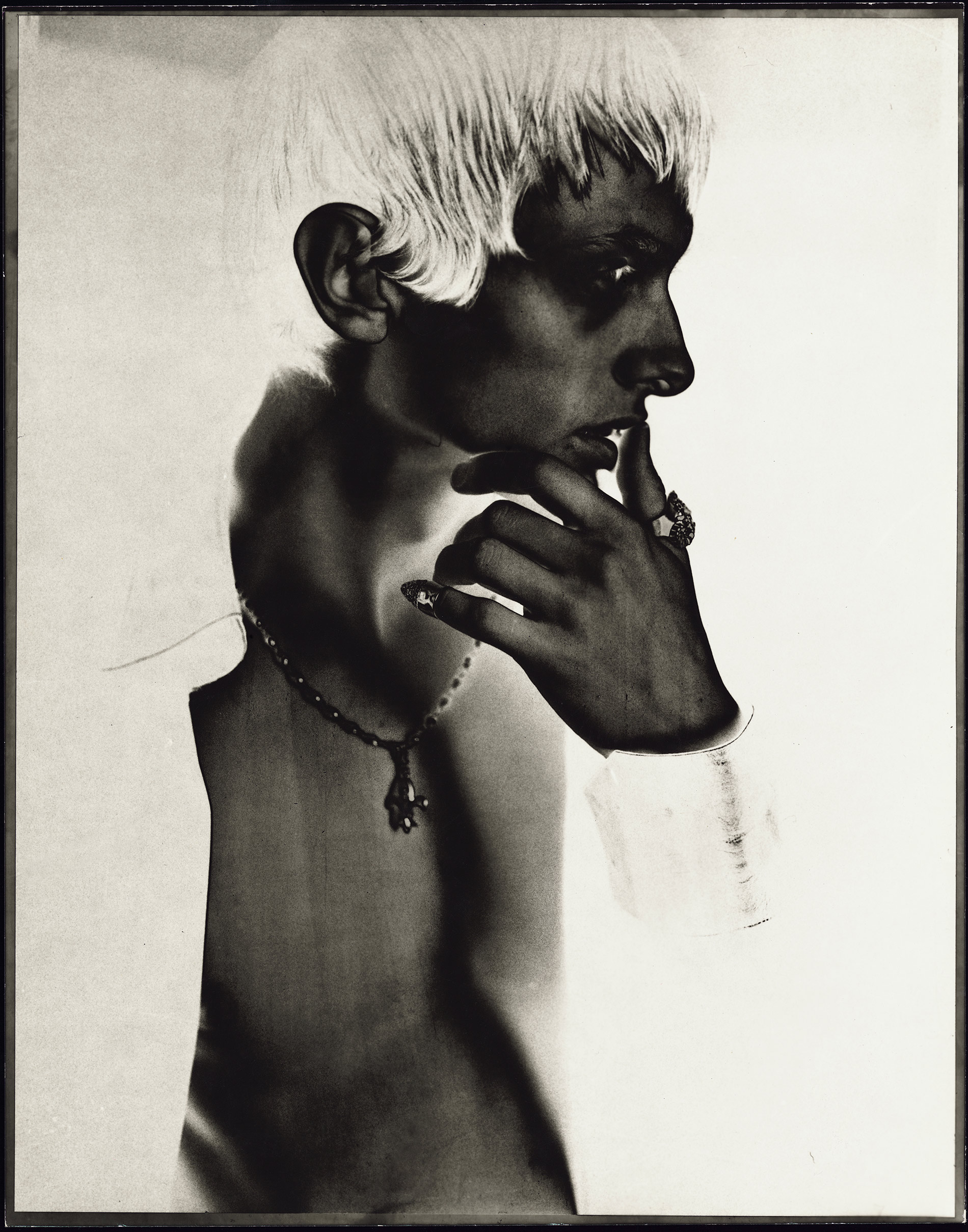
A few years ago, I was having a backlash moment - the advent of 50 mp images and 30" monitors on set was making me miss the days of the mystery in the box. Long ago, photographers (and clients, models, assistants, stylists, the glam team) had to wait a solid minute for a Polaroid to develop before any decisions were made. And then, there were still no guarantees - the lab could have a temperature spike, the lens could have a malfunctioning aperture (been there), some idiot could mistake your black and white film for color (been there) and run it that way (good bye, six rolls of Don Cheadle) - anything was possible. More often than not, though, the visit to the lab after a shoot meant an hour in happy discovery - hovering over proofs with a lupe, editing in the moment, finding favorites.
I missed that. I missed the surprises, the unpredictability of human moments translated by grain and light and chemistry. So I decided to assign myself a darkroom project, based on a process I learned as a student - the Sabatier technique.
Sabatier prints are a combination of several factors - double exposing a print, solarization, paper neg, a weaker developing solution - but what appeals to me most is the unpredictability. You cannot reproduce the same image twice in Sabatier, each image is by definition unique. The motion of the developer over the paper, how you decide to apply the developer, imperfect dodging and burning practice (only a machine can replicate the same moves repeatedly) - these all combine to create something unpredictable. And I love that.
The smell of fixer is completely nostalgic to me - bringing back nights spent working/playing to the Clash, The Specials, Public Enemy, Shostakovich, Etta James, Cameo - whatever motivated me at 3 am. (And at any hour, living in NYC at 6th Ave and 10th St., I could always get a snack - Gray's Papaya and the Bagel Buffet were two blocks away.)
I selected negs from my archives and started playing. A friend had a terrific darkroom at Hollywood and Cahuenga - I did my printing there in Hollywood, sometimes until 3 am, engrossed in the process of reinterpretation.
Every opportunity I get, I shoot film to feed this project.
M
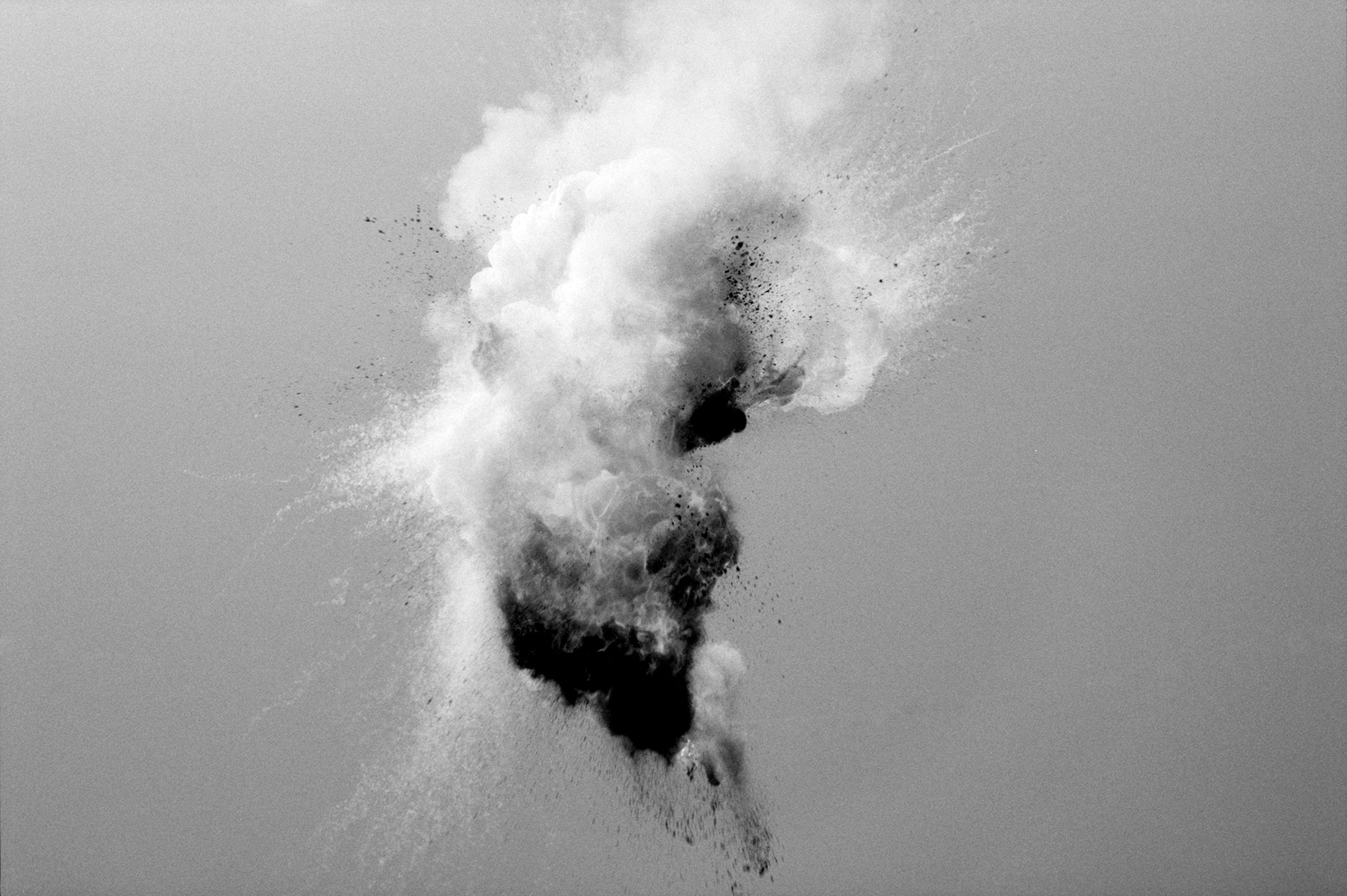
Several years ago I was asked to contribute to a new magazine, Spirit and Flesh, a beautiful oversized art publication out of New York. I was given the theme of Hunger, and that was the entire prompt. How the story that I imagined came out of that prompt, I'm still not sure - but it appeared complete in my head, a dystopian landscape with a lone resident. The styling would have to be epic, huge, almost a trompe l'oeil - and there would have to be explosions.
I'm a pyro. Any opportunity to set something on fire or blow something up is fine by me. The problem in this case was the usual one - how to set off a bunch of explosions without hurting anyone. The solution in this era of photoshop is simple - but making the explosions happen was still going to be tricky.
Enter Big Bang Al, Albert Lannutti, a forty year veteran of the film industry - the hypertalented set designer Patrick Muller introduced me to this explosives guru and we were ready to go. Check Al out on IMDB - http://www.imdb.com/name/nm0487000/ - this man knows his explosions.
But where to blow stuff up? My backyard, ultimately - we live on an acre and have hoses everywhere, so the possibility of fire was locked down. I had a powder concept I was imagining for the makeup - I discussed it with my makeup artist for the project, the incredible Garret Gervais, and he started talking about Indian Holi powder, the brightly colored powder people throw at each other on Indian Holi Day. That was it - the bombs were constructed around packets of red Holi powder, and the powder became a central metaphor in the story. Thank you, Garret! Creative collaboration is one of the best things about this job.
Al actually yelled 'fire in the hole!' every time he detonated one of our ten explosions - excellent. I shot stills, my wonderful DP Charlie Balch shot motion, and the explosions were captured to become a part of the story.
I love the story, Lucid Dream (the editors at S&F named it, I was fine with just calling it Powderbomb but maybe that was too prosaic) - the model, Hanalei Reponty, is the gamest girl ever, a surf pro who is equally okay with standing barefoot on baking desert sand or running just as barefoot and barely dressed across a 34 degree beach in frosty February. (We've done both together - well, I've shot her doing it.) The stylist, Emma Trask, made the epic choices I was hoping for and the hair stylist Lou Moon killed it as always. Interestingly, though, the explosions can live on their own - here are a few of them. The whole experience inspired me to do an ongoing explosion series (entitled 'Pyro') - it's just about deciding what to blow up next. Al recommended noodles - nice and soft - I was thinking clock parts - which Al mentioned would make a schrapnel bomb. This is why it's always smart to work with pros. Stay tuned for more explosions - or maybe something with a flamethrower.
